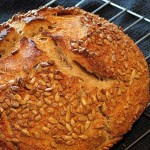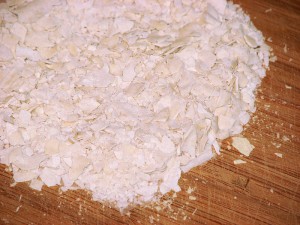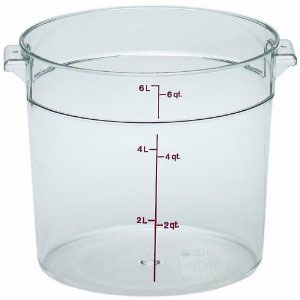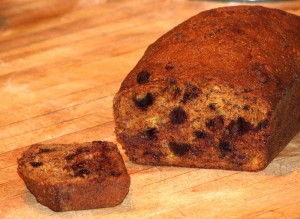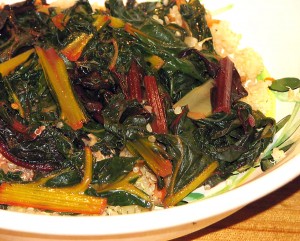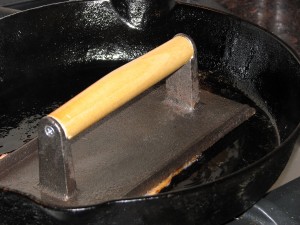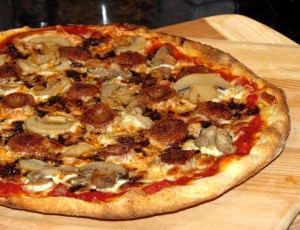 Just wanted to post a shot of the pizza I made tonight…it tasted as good as it looks. This was, of course, made from scratch and here is the printable recipe for the crust. One of the most important tricks to making a great pizza is using a pizza stone…you just can’t bake a great crust without it. A pizza stone has a greater thermal mass then either a glass or metal pan and therefore holds and distributes heat better. It’s also porous, so it absorbs moisture from the dough as it cooks, all of which contributes to an amazing, crisp, uniformly browned crust. Also, get yourself a pizza peel…they’re inexpensive and make putting the pizza in and, more importantly, taking the hot pizza out of the oven, a breeze.
Just wanted to post a shot of the pizza I made tonight…it tasted as good as it looks. This was, of course, made from scratch and here is the printable recipe for the crust. One of the most important tricks to making a great pizza is using a pizza stone…you just can’t bake a great crust without it. A pizza stone has a greater thermal mass then either a glass or metal pan and therefore holds and distributes heat better. It’s also porous, so it absorbs moisture from the dough as it cooks, all of which contributes to an amazing, crisp, uniformly browned crust. Also, get yourself a pizza peel…they’re inexpensive and make putting the pizza in and, more importantly, taking the hot pizza out of the oven, a breeze.
Pizza stones are available just about everywhere, and come in a variety of sizes and shapes (and prices). They should be put in a cold oven, then preheated for at least 30 minutes before using. Because they are porous and absorb liquid, the stone should never be washed with soap…just a dry brush or some plain, warm water if needed. They are also ideal surfaces for baking bread and also for making crispy, homemade crackers.
t
stone or piece of
ceramic or
earthenware used to evenly distribute
oven heat to
pizzas or other baked goods, more or less mimicking the effects of cooking a pizza in a
masonry oven. Such bakeware has more
thermal mass than metal or glass pans. The
porous nature of the stone used also helps absorb moisture, resulting in a crisp crust.
What makes a good egg? There are so many things to consider, especially when egg carton vocabulary seems to grow by the day. If you’re in an egg-sistential quandary in the grocery aisle, here’s a cheat sheet on how to decipher egg dozens. A great article from Serious Eats on one of my favorite foods.
